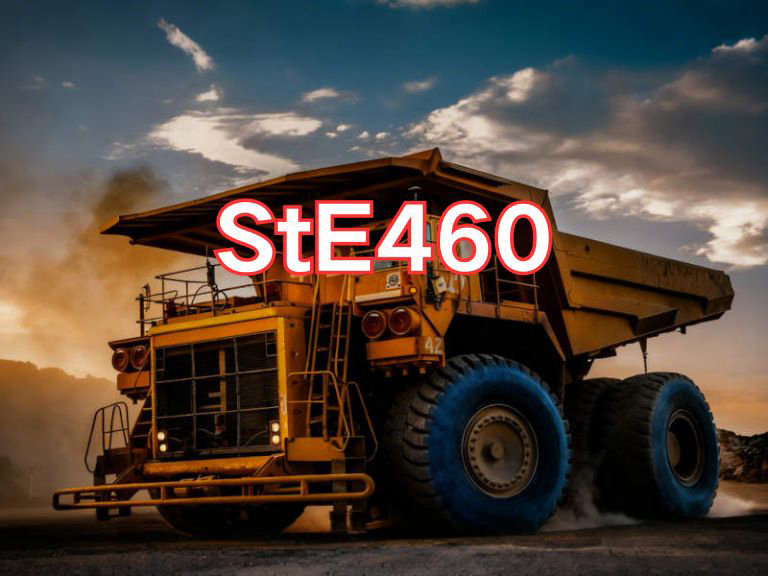

S355K2
S355K2 is a high-strength, non-alloy structural steel, with its designation following the European standard EN 10025-2 naming system. In this system, "S" stands for "Structural steel," indicating it is designed for load-bearing structures and engineering applications; "355" refers to the specified minimum yield strength of 355 MPa at room temperature; "K2" denotes the impact toughness grade, where "K" indicates Charpy V-notch impact testing at lower temperatures (compared to the "J" series), and "2" specifies a test temperature of -20°C with a minimum absorbed energy requirement of 40 joules (J). Therefore, S355K2 is a hot-rolled structural steel that maintains excellent toughness at low temperatures. Compared to S355J2 (tested at -20°C but requiring only 27 J), S355K2 has a higher impact energy requirement, meaning superior resistance to brittle fracture, higher steel purity, and improved metallurgical quality, making it suitable for applications with extremely demanding safety and toughness requirements.
The main characteristics of S355K2 steel plate include high strength, outstanding low-temperature toughness, and well-balanced overall performance. Its tensile strength typically ranges from 510 to 680 MPa, with a minimum yield strength of 355 MPa, along with good elongation and uniform mechanical properties. Through strict control of impurity elements such as sulfur and phosphorus, and optimized steelmaking and rolling processes, S355K2 achieves higher purity and a finer grain structure, significantly enhancing its crack resistance and ability to withstand dynamic loads. The steel has a low carbon equivalent, ensuring good weldability and compatibility with various welding methods such as MAG and SAW. Welding can generally be performed without preheating or with only minimal preheating while maintaining high joint quality. Additionally, it offers good cold-forming and bending capabilities, making it suitable for manufacturing complex structural components.
S355K2 is widely used in bridges, offshore platforms, low-temperature storage tanks, heavy lifting equipment, railway vehicles, wind turbine towers, and high-safety structural buildings operating under extreme climatic conditions. It is particularly suited for critical load-bearing components in cold regions or areas subject to high stress concentrations and dynamic loading.
The current standard for S355K2 steel plate is EN 10025-2:2019, titled Hot Rolled Products of Structural Steels – Part 2: Technical Delivery Conditions for Non-Alloy Structural Steels. Published in 2019, this version supersedes EN 10025-2:2004 and is the authoritative international specification. It clearly defines technical requirements for chemical composition, mechanical properties, and impact energy (≥40 J at -20°C). As one of the highest toughness grades in the S355 series, S355K2 plays a vital role in ensuring structural safety under extreme conditions and is a key material choice in high-end engineering applications.

Ultrasonic Testing (UT)
A key non-destructive testing technique that uses high-frequency sound waves to detect internal flaws in steel plates. The probe emits sound waves, which reflect when encountering defects such as cracks or inclusions. The receiver captures the echoes, enabling precise determination of defect location and size. With high sensitivity, strong penetration, and fast inspection speed, UT effectively ensures internal quality, widely used in the production of heavy plates, pressure vessel plates, and other high-end products to guarantee safety and reliability.

Magnetic Particle Testing (MT)
A common surface inspection method that magnetizes the workpiece, causing leakage magnetic fields at surface or near-surface defects like cracks or inclusions, which attract magnetic particles to form visible indications. Simple to operate and highly sensitive, MT is suitable for rapid inspection of surface and near-surface flaws in ferromagnetic materials, widely used for online or offline inspection of plate edges, ends, and welds, ensuring product quality and safety.

Penetrant Testing (PT)
A non-destructive method for detecting surface-breaking flaws. A penetrant liquid is applied to the cleaned steel surface, allowing it to seep into defects such as cracks or pores. After removing excess penetrant, a developer is applied, causing the trapped penetrant to bleed out and form visible indications. Simple and cost-effective, PT is suitable for inspecting surface defects in various non-porous materials, commonly used for welds, castings, and complex components, effectively ensuring surface quality of steel plates.











